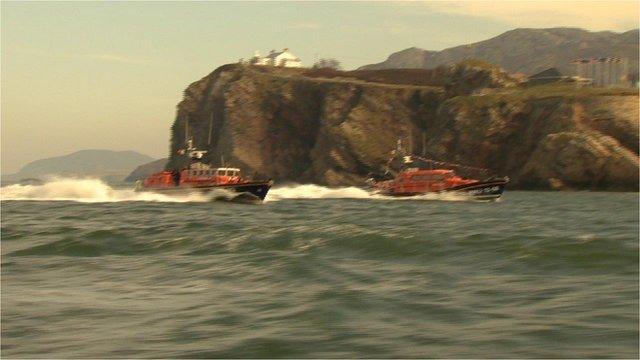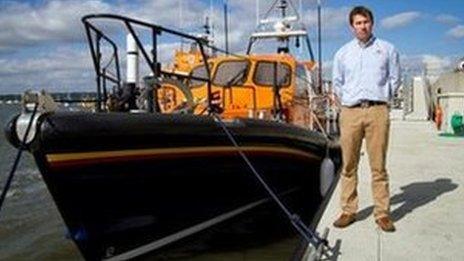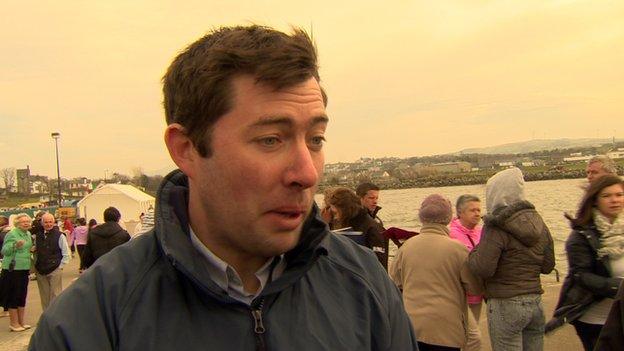Donegal RNLI receives first Shannon class lifeboat in Ireland
- Published
The new lifeboat arrived into Buncrana on Friday morning
A new RNLI lifeboat designed by a man who was saved by the service as a teenager has arrived in County Donegal.
Lough Swilly lifeboat station is the first in Ireland to get the brand new Shannon Class lifeboat.
The 2.4m euros (£1.8m) boat was built in England and is the smallest, fastest and lightest in the RNLI fleet.
The boat was designed by Peter Eyre from Londonderry who was rescued by a Lough Swilly lifeboat when he was 14.

It is the first of its class to be put on service in Ireland
Lough Swilly lifeboat operations manager John McCarter said it was an amazing new addition.
"It is probably the most advanced lifeboat that has entered the lifeboat fleet. It is absolutely new and fully up to date oat that has immense capabilities and we're the first station in Ireland to receive one.
"Indeed it's the first class of lifeboat to be named after an Irish river so it's a double first. It's an amazing bit of kit, we've had crews on it bringing it home and they are really over the moon on the capabilities the boat has and what an upgrade it will bring to the service here out of Lough Swilly.
"Peter cut his teeth sailing in Lough Swilly and got the bug for the water and has done a lot of good work within the RNLI and is pretty much the chief designer of this Shannon class boat and we're delighted that that is also a great connection to Lough Swilly, Derry and the north west."
Peter Eyre who is now an RNLI naval architect based in Poole, in England was instrumental in the development of the new lifeboat.

Peter Eyre with the Shannon prototype
Mr Eyre attended Foyle and Londonderry College before studying ship science at the University of Southampton. He began designing the hull form at the age of 24 in his spare time.
He said his own experience with the RNLI as a teenager was the inspiration for the boat.

Peter Eyre was saved by the service aged 14 and designed the new boat
"It was quite a stormy day on the Swilly and we were out sailing in our family yacht and lost the mast because of the strong winds and the Swilly crew came out to us and brought us to safety so that was my first foray with the RNLI.
"This boat is much quicker than the one it replaces, it does 25 knots. Time is of essence for most of these rescues and it's also much safer for the crews especially in rough weather.
"We would share a lot of the same base of suppliers with formula one so it's quite similar in the design approach using all the cutting edge technology available. I'm incredibly proud."